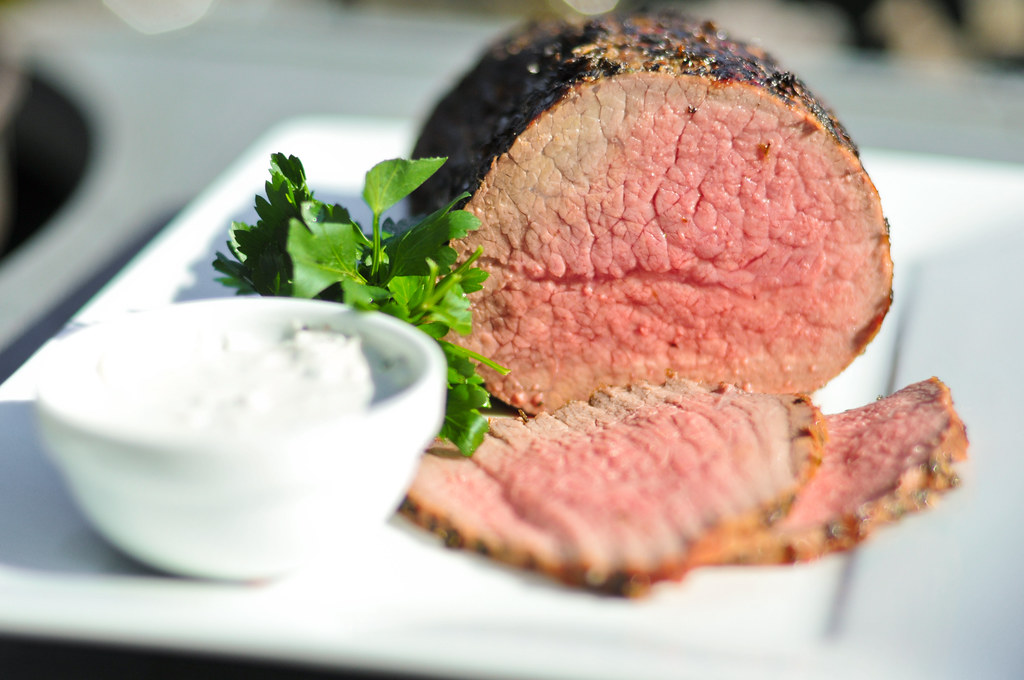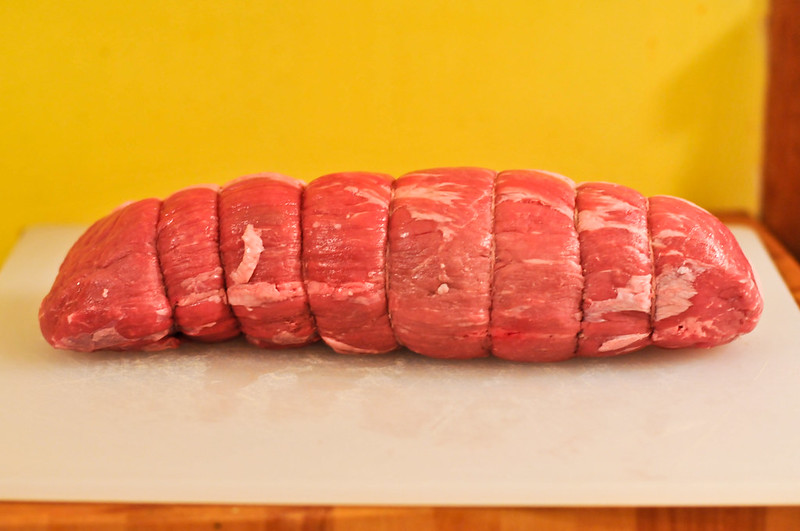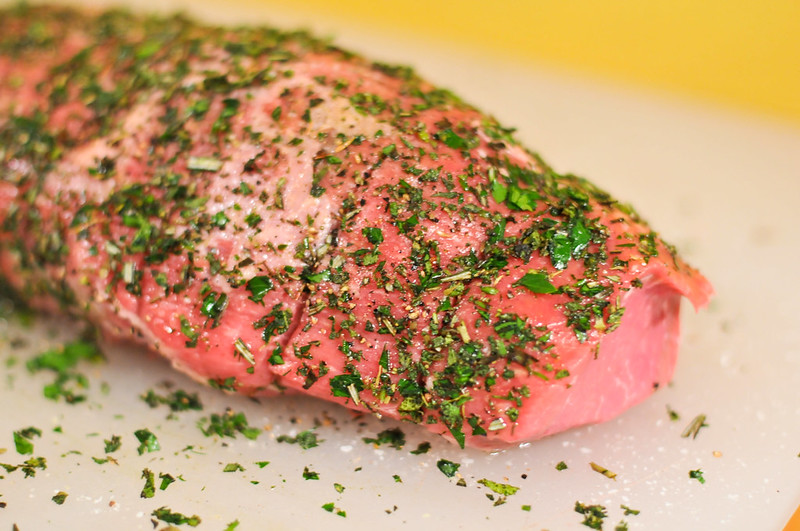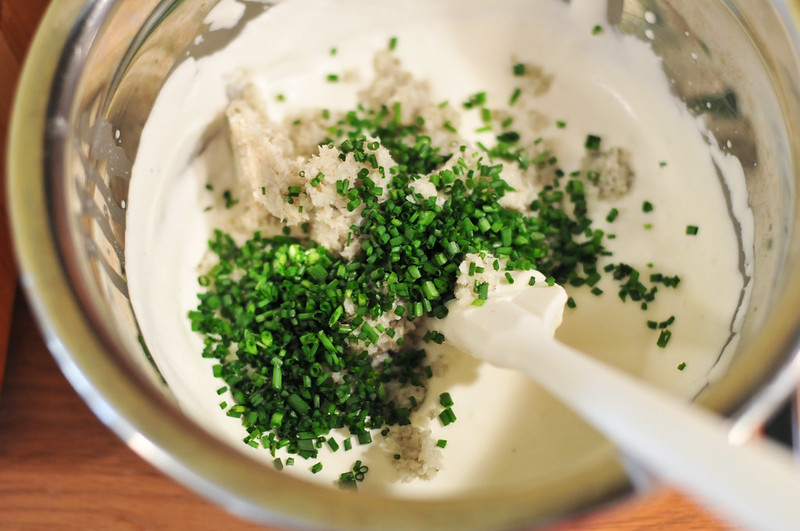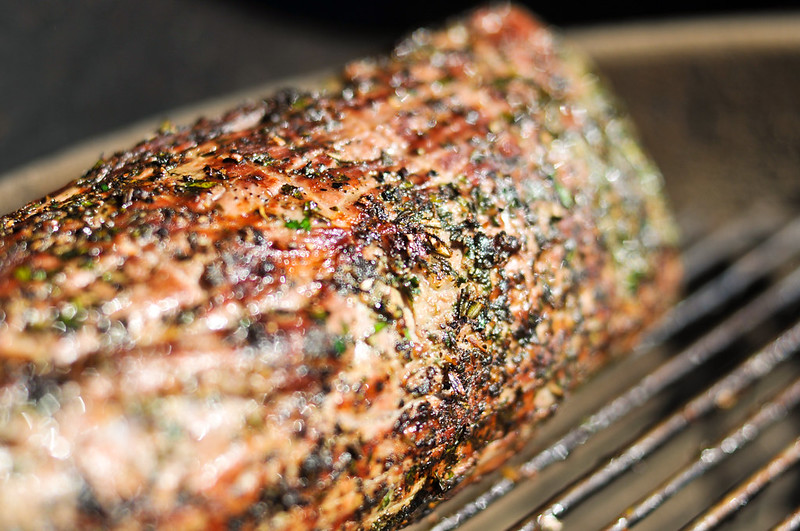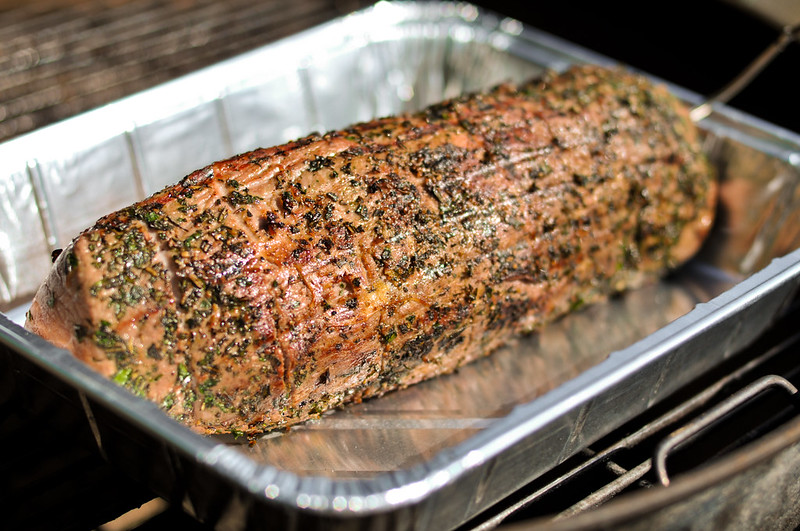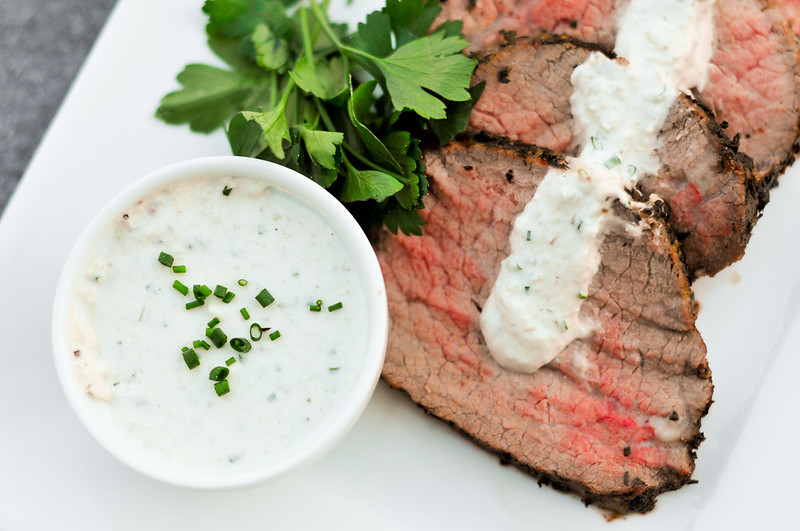Herbed Roast Beef With Horseradish Cream Sauce
Looking back at my first competition and considering the financial aspect of how much I put in versus how much I got back, I'm going to have to find some ways to cut costs here and there, along with winning more, to make this a hobby I can sustain over time. My number one biggest expense that day were two beef tenderloins, whose cost were probably justified as they brought home a first place, but they also serve as starting point in exploring what could have been done instead that would require less of an investment. This led me to thinking about more budget friendly pieces of beef that can deliver on flavor and texture using a similar grill-roasting technique that was employed with the tenderloin, something like this herbed roast beef.
Ditching the absurdly overpriced tenderloin—whose cost I think is unjust considering it's relative lack of flavor—I turned to a beef eye round for this roast beef. This cut is taken from back of cow, and has a long, cylindrical shape that's similar to the tenderloin. While any cut from the hard working muscles in the round will be "tough," the eye is one of the more tender of the lot.
Without a lot of fat, there wasn't much butchering needed on this roast, so the prep consisted of liberally covering the beef with salt and pepper, followed by a coating of an herb mixture that included rosemary, thyme, and parsley. The beef was then wrapped tightly in plastic wrap and set in the fridge overnight.
While the beef was taking it's rest, I considered accompaniments—not a bad idea when opting for an inexpensive piece of meat. I settled on pairing the roast with a standard horseradish cream sauce, made with lightly whipped cream, creme fraiche, horseradish, chives, and lemon juice. I assumed this flavorful sauce would have the power to elevate the beef if it wasn't all that I hoped it would be.
The next day it was time to grill, which had to be carefully considered to make a tough piece of beef come out nice and tender. For this, I took a cue from Cook's Illustrated, where they devised a method to roast the beef in manner that keeps its internal temperature under 122 degrees F as long as possible to achieve just that. It started with searing the roast quickly over a very hot fire to develop the flavorful crust.
Then the roast was then transferred to an aluminum pan and put over indirect heat to finish cooking. The pan acts as a heat shield that lowers and regulates the heat hitting the roast, letting it cook more slowly and evenly.
As important as the cooking method, was making sure the roast didn't cook past the desired medium-rare or medium temperature. Unlike a tenderloin that can be somewhat forgiving—although you don't really want to cook it past medium-rare—the eye round will become even more tough as its internal temperature rises. So as soon as mine hit the desired 130 for a nice medium, I pulled it right away.
A final rest of 15 minutes was given to let the juices redistribute in the beef, then it was time to slice and serve. In the end I mainly got what I wanted, a tender piece of beef that was juicy and had an excellent crust. The beefiness factor was pretty down there though, not coming close to what a rib roast would offer, but that's where the rich and spicy horseradish sauce made up the difference. This roast is a fine substitute for when you need to do beef on a budget, but you also kind of get what you pay for—it would not cut it in competition at all. I guess that means I need to focus more on winning the big bucks than trying to save a few.
You Might Also Like
Comments
-
Chris See if you can find a top sirloin petite roast in your area. I find it is a suitable replacement for beef tenderloin (especially when kept med rare or less) and much better texture and flavor than eye of round.
http://www.nibblemethis.com/2011/10/boneless-top-sirloin-petite-roast.html -
Elizabeth I used a 2.87 lb beef eye round. I used Chicago steak seasoning rather than fresh herbs, but let it rest for the 24 hrs. I took the meat out an hour before throwing it on my pre-heated grill at 500 degrees. I seared all sides for about three minutes each directly on the grates, and then I moved it to my oven, which was also 500 degrees; my grill doesn't hold heat well enough. As soon as I popped it in, I turned off the oven, and I let it sit only one hour. When I took, it out, I let it sit another half-hour. It was that perfect cross between medium-rare and rare that I adore. Horseradish cream sauce was super.
